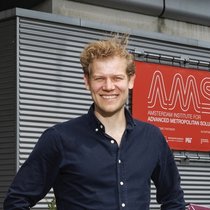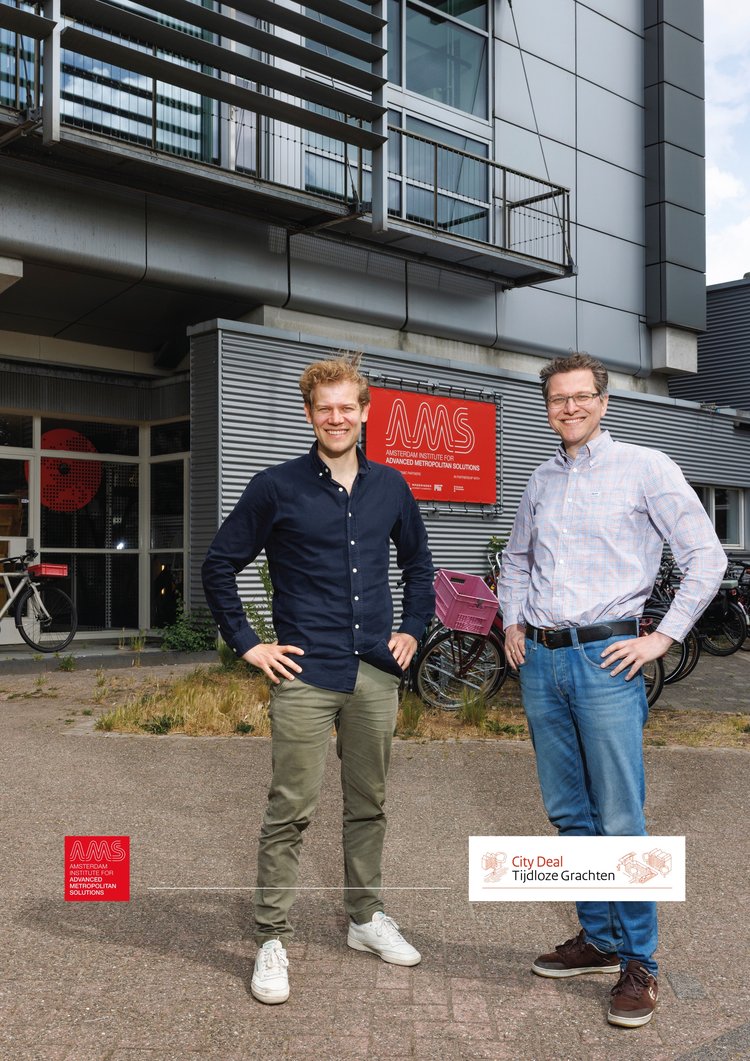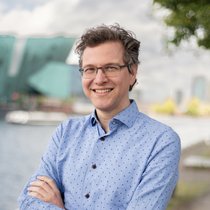Many historic city centers in the Netherlands owe their unique character to canals, bridges and quay walls. Good and sustainable maintenance is therefore essential for the attractiveness and water infrastructure of our cities. To develop future-proof and widely applicable solutions, the City Deal Tijdloze Grachten and the Living Lab Learning Environment are joining forces. “We don’t just want to experiment—we want to make sure innovations are embedded in policy, standards and practice.”
Beneath the beauty of the canals, bridges and quay walls in Dutch city centers lies a fragile reality. Recent incidents highlight the urgent need for proper maintenance to ensure the safety and livability of inner cities. In the City Deal Tijdloze Grachten, frontrunners are combining their knowledge and experience in this field. “Together, we want to create a new standard for canal maintenance—one that other cities can benefit from as well”, says Sander Steeneken (advisor at DHM), within the City Deal responsible for ‘Unlocking and Scaling Knowledge’. “Only by working together and learning from each other can governments, businesses, knowledge institutions and civil society organizations develop and implement sustainable solutions.”
“Experimentation is relatively easy: it’s visible, new and exciting. But it’s much harder to embed the lessons from those pilots into work processes, standards or training. That takes real effort.”
Sander Steeneken

Shared Ambition and Scalable Solutions
The collaboration between the City Deal and the Living Lab Learning Environment is not coincidental: it stems from a shared sense of urgency and ambition. As a project manager at AMS Institute - a partner in this City Deal - Menno van Dijk is developing this learning environment together with Toekomstbestendige Leefomgeving. “We support professionals who want to accelerate innovation in infrastructure through a Living Lab approach. We call this ‘Learning Lab Infra’: a collaborative approach centered on experimentation and jointly discovering what works and, more importantly, why it works. This creates a culture where making mistakes is acceptable, learning is prioritized, and solutions are broadly supported”, Van Dijk explains. “What you’re doing with the Learning Lab and the Living Lab approach fits exactly with what we need to truly scale up”, adds Steeneken.
One important challenge, for example, is preventing valuable experiments from staying at the local level. “Local initiatives do arise, but the insights tend to fade”, Van Dijk observes. “What’s missing is the translation into standards or guidelines that can help the sector as a whole.” Steeneken agrees. “Experimentation is relatively easy: it’s visible, new and exciting. But it’s much harder to embed the lessons from those pilots into work processes, standards or training. That takes real effort.”
Examples of Living Labs
In Living Labs, governments, knowledge institutions, contractors and developers test innovative solutions in real-life settings. This means more than just local experiments - Living Labs are innovative ecosystems where local stakeholders work together on sustainable changes in the sector. This not only leads to applicable solutions but also contributes to a lasting culture of collaborative problem-solving. In Living Labs, learning happens through joint experimentation, failure and improvement, making the entire sector more innovative and a more enjoyable place to work.
For example: testing methods to predict and extend the lifespan of quay walls through data analysis and test loads. One such test involved buoycrete used on a section of quay in the city. Another example is the project ‘Multifunctional Quay Walls’, where renovation and future-proof replacement of quay walls is linked to broader urban transitions and themes.
A Learning Structure for Scaling Up
To equip professionals within the City Deal with the Living Lab way of working, they follow a three-part training course. “The training follows a step-by-step structure,” Van Dijk explains. “From basic knowledge about what a Living Lab is, through collecting and analyzing results, to translating outcomes into standards or policy instruments. After the training, the professionals will have the skills and tools to apply this themselves.” Steeneken is receiving additional training so that he can act as a facilitator and internal coach. “This enables us to evaluate more effectively and learn across our partner network”, Steeneken says. “Ultimately, we want these lessons to be incorporated into training, manuals, standards or national guidelines for quay maintenance.”
“The Learning Lab Infra offers more than just training and coaching”, Van Dijk emphasizes. “We aim to be a network where professionals working in Living Labs can connect and learn from each other about innovations and experimenting together. This is already happening in Amsterdam on Kennisplatform KKBK Bruggen & Kademuren and projects like De Nieuwe Straat. But we don’t want to limit ourselves to Amsterdam. We want to make this Learning Lab accessible to other municipalities too.” And that’s another area where the City Deal and the Learning Lab align. “Fifteen municipalities are already involved in the City Deal, seven of them as full partners”, says Steeneken. “That’s why we’re organizing a City Deal Day this autumn with the Learning Lab as the central theme. This will give the seven other participating municipalities and eight advisory municipalities the chance to experience this approach. We want to show that real change requires time and space, and how this way of working can lead to sustainable and widely supported solutions.”
“We aim to be a network where professionals working in Living Labs can connect and learn from each other about innovations and experimenting together.”
Menno van Dijk
Project Manager Circularity in Urban Regions
Towards a New Standard
With their initiatives, Steeneken and Van Dijk aim to contribute to structural change in the sector. “Four years from now, I don’t want to say: we’ve done some great experiments. I want to say: we’ve made changes that last”, Steeneken states. That change, according to him, can take various forms: a handbook, a guideline, a training course or even an entirely new standard. “The key is that all partners involved in canal maintenance know how to do this in a sustainable and future-proof way. In the City Deal, we’re working towards a structural collaboration that continues beyond the project’s duration. Experimenting is attractive - it’s easy to communicate and often shows good results”, Steeneken says. “But scaling up and embedding innovations into policy or standards is harder. It takes time, space and perseverance.” The collaboration with the Learning Lab Infra is intended to accelerate this process. Van Dijk adds: “We want to help professionals not just to try something new, but to understand how to embed those innovations structurally and sustainably in their organizations and working methods. That’s how we create lasting impact.”

